6BE005: The Strategic Business Assignment Sample
Module code and Title: 6BE005: The Strategic Business Assignment Sample
Section 1: The Strategic Environment
1) Introduction
Unilever is one of the most popular consumer goods companies in the world. The headquarter of the company is in London, UK. Currently, the company actively operates in more than 190 countries. Every little thing that a human being needs in their daily life is there in the product portfolio of Unilever such as food, toothpaste, supplements, beauty and personal care products, and many others. The company has been immensely successful in the global market since its inception in 1929.
In order to operate effectively in all countries the company has divided its business into three main parts, namely “foods and refreshments, home care; and beauty and personal care.” The 400 brands owned by Unilever have generated revenue of about 53 billion Euros in 2021. There are 149,000 employees associated with the company currently.
The main objective of the company is to make the life of human being a sustainable one. In order to save the environment from pollution, Unilever uses plastics that are recyclable and reusable. Around 3.4 billion people across the world use the products of Unilever on a daily basis. The world’s largest consumer goods company is famous for its great brands and believes to do business in the right way.
2) Internal Analysis
Significance of internal environment in an organization
The internal environment of an organization generally consists of several internal factors such as the human resources department, organizational structure, and the mission and vision of the organization (Alhawamdeh and Alsmairat, 2019). The internal environment has a huge impact on the employee behavior as well as it helps them to make proper decisions within the workplace.
Application of the internal analysis model
Unilever has been one of the giants in the fast moving consumer goods sector. One of the main reasons behind its immense success in the global market is its capability of earning competitive advantages over its rivals by applying proper market strategies (Bose, 2018). However, the company cannot ignore the emerging threats that may come from different global as well as local players. SWOT analysis proves to be a useful model in this context to understand the market clearly.
|
S |
● Diversified product mix
● Strong global presence ● Strong brands |
|
W |
● Imitative nature of products
● Limited business reach ● Dependence on retailers |
|
O |
● Innovation in product portfolio
● Market development ● Promoting environmental conservation |
|
T |
● Tough competition
● Product imitation ● Increased popularity of house brands |
Table 1: Swot Analysis of Unilever (Source: Self-created)
Strengths
The product mix of Unilever is one of the most diversified ones in the fast-moving consumer goods sector. The broad product mix is one of the major reasons behind the extensive growth of Unilever in the global market (Calabrese et al. 2019). The company has expanded its business with the help of mergers and acquisitions for several years. It has also been able to make a strong global presence with the help of international business expansion for years.
Weaknesses
Although Unilever has been successful to make a strong brand image in the international market, several weaknesses can limit its growth. One of the main weaknesses of the company is its imitable products. Unilever invests a huge amount to develop new products but still, other companies can imitate some of its products like Dove and Rexona soaps (Unilever, 2022).
Unilever also lacks a business diversification strategy that is only limited to the consumer goods sector. Hence, it fails to have a strong influence on the customers as the company thinks retailers directly affect the buying decisions.
Opportunities
This can reduce market risks and improve the stability of business in the market (Chin et al. 2021). Subsequently, Unilever can shift the focus to manufacturing more innovative products as people nowadays are becoming very conscious about their health. All of these can definitely help Unilever to develop its market and increase the amount of revenue.
Threats
Although Unilever is a familiar name in the household, the company faces tough competition in the global market from companies like P&G, the current global market share of which is 73 billion USD. There is always a chance of reducing financial performance as well as market share because of tough competition in the market. Another threat for Unilever is its imitable nature of products that allows other companies to manufacture similar products easily (Coteur et al. 2020). As an example, Kirkland, the house brand of Costco directly competes with Unilever in the international market.
Evaluation of the model
A SWOT analysis is helpful for a business to identify the key issues that can affect its business. However, it is unable to provide appropriate solutions to those issues. Therefore, Unilever needs to be aware of the limitations of SWOT analysis along with its benefits. It needs to be always prepared to invest more time in reviewing the analysis so that it can be utilized to expand the business. The main benefit of a SWOT analysis is that it demands little or no cost (Däniker, 2019).
Furthermore, it can be used effectively to address any complex situation in the business. Some of the other reasons behind Unilever considering SWOT analysis over others are its capability of determining threats, utilization of the potential opportunities, and developing strategies to achieve the organizational objectives. On the other hand, Unilever can sometimes think of using other models such as TOWS analysis or the McKinsey Model to address the issues in business operations as SWOT analysis has certain limitations.
The analysis is not capable of prioritizing issues present business model or does not offer any solutions to those problems (Hanaki et al. 2019). Moreover, not all the information produced by the SWOT analysis can be useful for the organization, and therefore, it needs to evaluate the model critically.
3) External Analysis
Significance of external environment in an organization
The external environment of an organization consists of factors that cannot be controlled by it but have a huge impact on the business operations (Knighton et al. 2019). In order to survive in the competitive international market, the manager of an organization needs to continuously adjust the market strategies according to the external business environment.
Application of the external analysis model
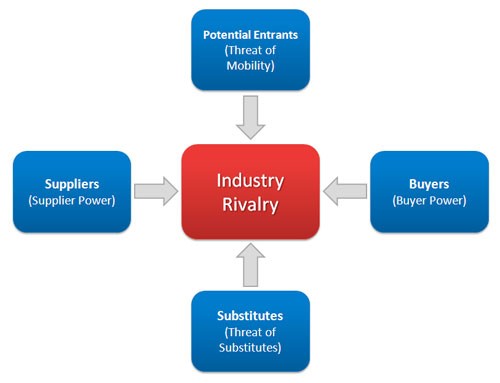 Figure 1: Porter’s Five Forces Analysis of Unilever (Source: Konovalov and Ruff, 2022)
Figure 1: Porter’s Five Forces Analysis of Unilever (Source: Konovalov and Ruff, 2022)
Porter’s five forces model is considered one of the most authentic tools that can analyze the competitive nature of a market from the perspective of a particular organization. Unilever takes the help of this model to understand the nature of its competitors as well as its current position in the market. Five forces of this model critically evaluate the external factors of an organization to implement appropriate strategies for countering those.
A worthy company like Unilever generally has a lot of competence in the market that can impact its market growth (Konovalov and Ruff, 2022). Therefore, it becomes essential to conduct an external environment analysis like Porter’s Five Forces analysis.
Buyer Power
Buyers or customers always possess the power of making a company trustable or likeable in the market. In the context of Unilever, the buyers are spread all over the world and they have the power to influence the company’s pricing strategies. It is one of the biggest responsibilities of Unilever to satisfy its customer base by matching their needs.
As an example, Unilever once had to reduce the price of all its products by 5% in 2019 as per consumer demand (Unilever, 2022). Hence, it can be said that Unilever is always very careful about the potential threats emerging from pricing strategies and thus, the impact of this force is low on the operations of Unilever.
Threat of Substitutes
Research claims that it is a human tendency to try a new or alternative product at least once in life. There is always a 70% chance of customers going for the same products introduced by a substitute. However, the case of Unilever is a little different as customers of the company would think twice before switching because of its reputation in the market (Nashir et al. 2021). Hence, the impact of this force on business operations is considered lower.
Threat of New Entry
The threat of new players in the market is not as effective for Unilever as it is supplying different types of products in the global market for years now. In countries where people generally believe in brand name and image would never opt for the products of a new company (Nieto et al. 2019). Hence, an established company like Unilever automatically gets an advantage in those markets.
Supplier Power
Unilever pays great attention to maintaining the loyalty and satisfaction of its suppliers just like the customers. This definitely reduces the chance of switching suppliers from the company. The loyalty that Unilever maintains with its suppliers makes a long-term relationship between them (Park and Um, 2018). Unilever signs a blanket agreement with its suppliers that is capable of solving all their concerns. Hence, the impact of this force is also low on Unilever.
Competitive Rivalry
Unilever operates on an international basis, and therefore, the competitive rivalry of the company is very high. The competitors of Unilever are as small as the domestic players of a country or as big as retail giants like P&G and Nestle. These companies can easily attract the customer base of Unilever by introducing similar products but at a lower price (Lairson, 2018).
Evaluation of the model
Porter’s Five Forces Analysis is a framework that companies around the world use to assess their position in the competitive market. One of the main advantages of using this model is that companies can measure the threat of new players in the market. This plays an important role in implementing a strategy as the company’s growth can be hugely affected by the competitive rivalry. The model further helps a company to have a proper understanding of the position of threats and strengths in a market (Nieto et al. 2019).
With the help of this evaluation, managers can take precautionary actions at the right time. On the other hand, Porter’s model only highlights the factors like substitution, supplier, buyer, and new competition. Other business strategies and environmental factors that influence a company’s decisions are not included here. Other analyses such as PESTLE prove to be more beneficial regarding this (Sultana et al. 2019). Furthermore, the model is unable to consider risk factors closely associated with a business such as foreign exchange policies, financing methods, and technological evolutions.
Section 2: Strategic Decision Making
1) The importance of strategic decision making
Strategic decision-making is considered one of the most important steps in all organizations. The reason behind this is it helps an organization to improve performance in the activities and get a better outcome. In order to survive in the competitive market, organizations make decisions that minimize the business risks and maximize the effect of long-term organizational objectives.
2) Strategic decision-making theories
Unilever has built its brand image with years of investments and implementation of appropriate strategies in its business operations. The net income of the company was recorded as 6.621 billion Euros in 2021 that shows its impact on the consumer goods industry (Unilever, 2022). However, it would not have been possible without the help of effective decision-making strategies. Unilever has taken the help of several theories during the process to utilize the strategy properly.
Bowman’s strategic clock theory
An organization takes the help of Bowman’s strategic clock to identify the proper position in a market for business based on price and perceived value. Unilever was one of the first companies to implement this theory in their decision-making strategies. The clock denotes eight different positions that highlight eight different strategies for a company to succeed in a marketplace. The first position is related to low price and low value-added that describes the value of products and services as low and price as low as possible (Williams, 2018).
Hence, it is considered the least competitive area of the clock. The next strategy is named low price and, in this strategy, companies offer products to their customers at the lowest possible prices. The other strategies include hybrid, differentiation, focused differentiation, risky high margins, monopoly pricing, and loss of market share. Unilever has taken the help of a differentiation strategy of this clock that has allowed the company to differentiate its products from competitors with high-perceived value added to those. This has also helped Unilever to diversify its product portfolio by introducing unique features.
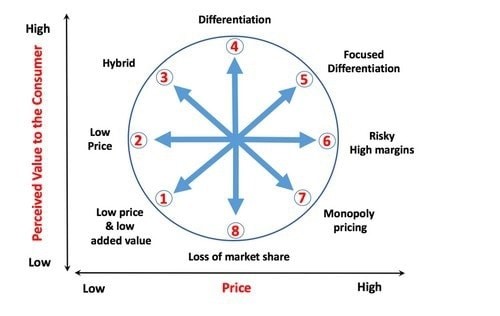 Figure 2: Bowman’s strategic clock theory (Source: Williams, 2018)
Figure 2: Bowman’s strategic clock theory (Source: Williams, 2018)
Porter’s generic strategies
Four strategies were proposed by Michael E. Porter for the companies to gain a competitive advantage in the international market. These four strategies are “cost leadership theory, differentiation strategy, cost focus strategy, and differentiation focus strategy.” Organizations opt for a strategy based on their current position and size in the market.
The differentiation strategy among all these seems to be the most effective one as companies get a chance to differentiate their products from the competitors with the help of this. Many factors need to be considered before implementing this strategy such as the maturity of the market, customers’ feedback, and the current revenue of the company (Yu et al. 2022). Unilever has successfully implemented this strategy in its business operations to secure a position among many competitors in the international market.
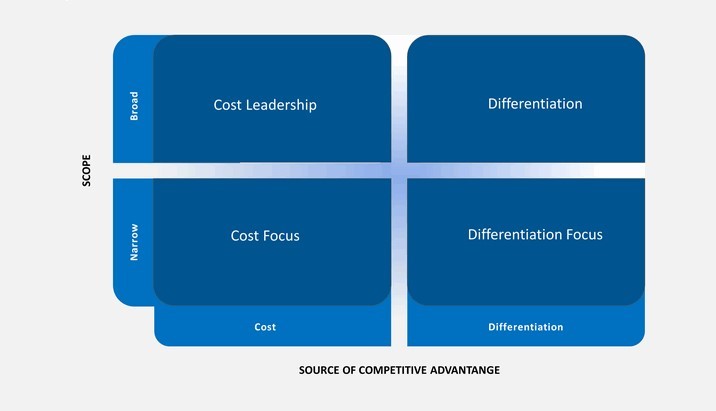 Figure 3: Porter’s generic strategies (Source: Yu et al. 2022)
Figure 3: Porter’s generic strategies (Source: Yu et al. 2022)
Ansoff Matrix
The Ansoff Matrix is used by companies to plan a strategic framework for developing strategies for market growth. Four effective strategies in the matrix define the different levels of business risks. These strategies are “market penetration, product development, market development, and diversification.” Unilever has used the diversification strategy properly since its inception as it has been able to enter new markets with new products quite often (Yuyan et al. 2020). This is one of the main reasons behind Unilever’s immense success.
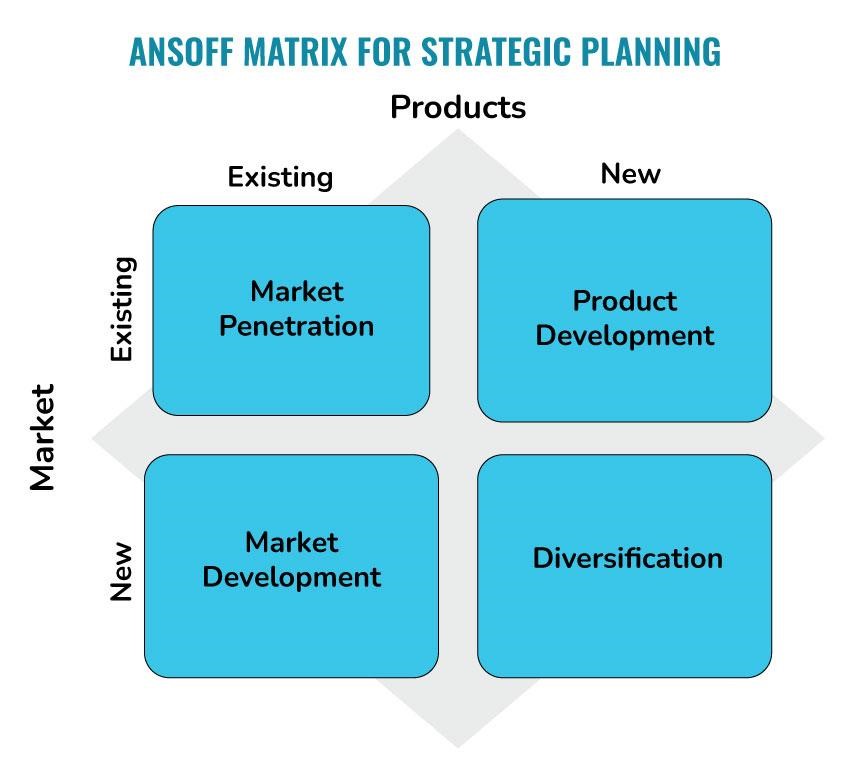 Figure 4: Ansoff Matrix (Source: Yuyan et al. 2020)
Figure 4: Ansoff Matrix (Source: Yuyan et al. 2020)
3) Impact on Strategic decision making
Many factors are responsible for making changes in the decision-making process of a company. Experiences of customers, cognitive biases, and belief in the nature of the product are all those factors that influence decision-making. Experiences of customers play the most important role in the decision-making process of a company, as people are more likely to purchase the same product when they get a good experience with it previously. Several cognitive biases are also associated with it that can influence the process.
Cognitive biases of consumers may include memory errors, faulty logic, or inappropriate judgments that may lead to poor decision-making (Park and Um, 2018). In the context of Unilever, both the internal and external environmental factors play large parts in the decision making process. Factors like competitiveness and buyer behavior influence the decision making process of Unilever. The company has to make strategic decisions such as pricing strategy, promotional strategy, and product development strategy based on these factors. In order to expand its market further around the world, Unilever is always prepared to take the advantage of growth opportunities.
One of the greatest opportunities that Unilever can utilize is by exploring the market outside the consumer goods sector. The company has a great opportunity by developing sustainable and environmentally friendly products to promote the arising environmental issues around the globe (Sultana et al. 2019). A recent threat that has emerged in front of Unilever is the increasing popularity of house brands of several retailers. Unilever has been successful in tackling the challenges that can influence its decision making process. The company has taken the help of different decision-making theories such as Ansoff Matrix or SWOT analysis to improve the business operations.
4) Evaluating the success of a current business strategy
The business strategy of Unilever is based on a generic strategy and intensive growth strategy. With the implementation of these strategies, the company has been able to make a strong image in the international market. The generic strategy of Unilever is based on a broad differentiation strategy. The main objective of the company behind using this strategy is to include unique features in its products that make it stand out from the competitors. As an example, Unilever manufactures personal care products like Dove that match the customers’ needs for soaps not making skin harsh or dry (Williams, 2018).
Despite its high market price, Unilever attains a competitive advantage from the product as it is unique from other soaps in the market that only focus on cleaning rather than moisturizing. Hence, Unilever is able to attract more customers with these specially designed products. It also supports the mission and vision statement of the company to support global sustainability and increase the value of consumers’ lives. On the other hand, a financial goal is also associated with this generic strategy of Unilever. Unilever has been able to gain more revenue in developing countries that has allowed the company to grow intensively in the market. The net income of Unilever is calculated as 6.621 billion Euros in 2021 globally (Unilever, 2022).
It is estimated to grow at a rate of 15% in the next five years. The intensive growth strategies of Unilever include one primary strategy, namely market penetration. With the help of this strategy, the company increases its sales volume to grow its business in the competitive market. As an example, Unilever sells its home care products aggressively in the United States and Canada where the demand for these products is relatively high. Unilever also uses this strategy to make its products more attractive than the competitors do.
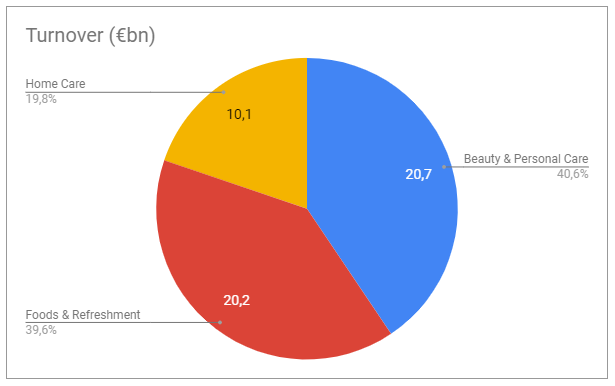 Figure 6: Annual turnover of Unilever in 2020 worldwide (Source: Unilever, 2022)
Figure 6: Annual turnover of Unilever in 2020 worldwide (Source: Unilever, 2022)
On the other hand, Unilever could have also used other strategies rather than the differentiation strategy. One of the main competitors of Unilever, P&G uses the transnational strategy to stay competitive in the international market. This type of strategy allows the company to determine the level of globalization and local competition with the centralized operation. The company has recorded a 9% more profit than Unilever using this strategy in 2020.
Unilever can also use this strategy for generating more revenues as it is divided into three small parts (Yu et al. 2022). The transnational strategy includes international strategy as well as multi-domestic strategy. In the international strategy, companies mainly focus on imports and exports and by that keep most of their operations limited to the origin country. In the other strategy, companies focus more on domestic competitors rather than global ones.
References
Calabrese, A., Costa, R., Levialdi, N. and Menichini, T., 2019. Integrating sustainability into strategic decision-making: A fuzzy AHP method for the selection of relevant sustainability issues. Technological Forecasting and Social Change, 139, pp.155-168.
Chin, M.K., Zhang, S.X., Jahanshahi, A.A. and Nadkarni, S., 2021. Unpacking political ideology: CEO social and economic ideologies, strategic decision-making processes, and corporate entrepreneurship. Academy of Management Journal, 64(4), pp.1213-1235.
Coteur, I., Wustenberghs, H., Debruyne, L., Lauwers, L. and Marchand, F., 2020. How do current sustainability assessment tools support farmers’ strategic decision making?. Ecological Indicators, 114, p.106298.
Däniker, G., 2019. Swiss Security Policy in a Changing Strategic Environment. In The European Neutrals in the 1990s (pp. 3-16). Routledge.
Hanaki, N., Koriyama, Y., Sutan, A. and Willinger, M., 2019. The strategic environment effect in beauty contest games. Games and Economic Behavior, 113, pp.587-610.
Knighton, R., Khokhar, N. and Tshofela, X., 2019. Decision Making in the Strategic Environment. In In Business and Battle (pp. 89-102). Routledge.
Konovalov, A. and Ruff, C.C., 2022. Enhancing models of social and strategic decision making with process tracing and neural data. Wiley Interdisciplinary Reviews: Cognitive Science, 13(1), p.e1559.
Lairson, T.D., 2018. The global strategic environment of the BRI: Deep interdependence and structural power. In China’s Belt and Road Initiative (pp. 35-53). Palgrave Macmillan, Cham.
Nashir, A.K., Komeini, Y. and Rosdiana, H., 2021. Strategic Environment, Strategist, and Strategy. Global Strategis, 15(1), pp.103-126.
Nieto, Y., Gacía-Díaz, V., Montenegro, C., González, C.C. and Crespo, R.G., 2019. Usage of machine learning for strategic decision making at higher educational institutions. IEEE Access, 7, pp.75007-75017.
Park, D. and Um, M.J., 2018. Robust decision-making technique for strategic environment assessment with deficient information. Water Resources Management, 32(15), pp.4953-4970.
Sultana, T., Afshan, S. and Fatima, Z., 2019. Pak-Russia Relations in The Emerging Geo-Strategic Environment. Journal of European Studies (JES), 35(1), pp.36-53.
Unilever. 2022. Unilever Global: Making sustainable living commonplace. [online] Available at: <https://www.unilever.com/> [Accessed 7 May 2022].
Williams, H., 2018. Strategic stability, uncertainty and the future of arms control. Survival, 60(2), pp.45-54.
Yu, X., Liu, T., He, L. and Li, Y., 2022. Micro-foundations of strategic decision-making in family business organisations: a cognitive neuroscience perspective. Long Range Planning, p.102198.
Yuyan, Z., Weijiang, F. and Wei, L., 2020. China’s International Strategic Environment. The Jingshan Report: Opening China’s Financial Sector, p.25.
Know more about UniqueSubmission’s other writing services:

